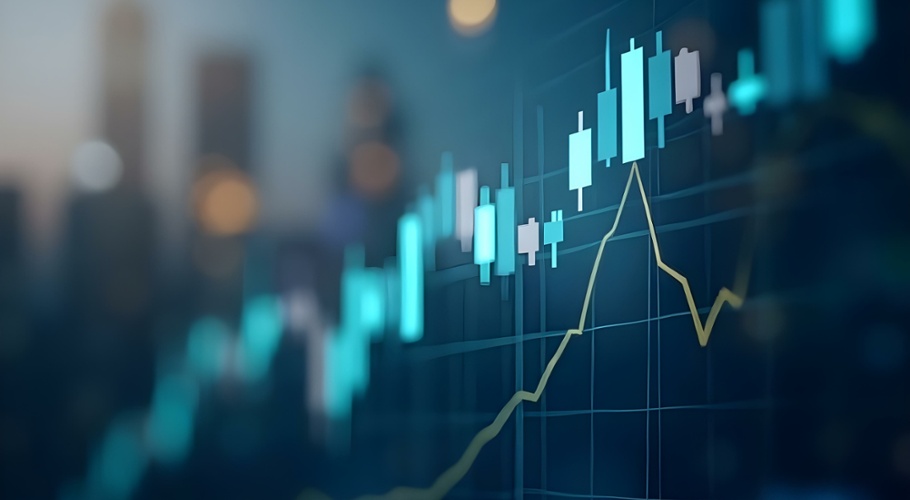After a year of turmoil and change, what may lie ahead in 2023?
It's been a tough year for stock market investors in 2022 with a long list of factors affecting markets including growing political risks such as Russia’s invasion of Ukraine and its impact on energy prices, high inflation, rising interest rates, market volatility, a slowdown in China, and ongoing supply chain disruptions.
If anything, in 2023 the world economy arguably faces an even darker outlook, at least for the first half of the year, as the current tightening monetary policy takes a fuller effect on developed countries and financial markets. The prospect of further weak growth in China as Covid infections resurge, a protracted conflict in Ukraine and the continuing impact of the higher costs of energy and food on most markets.
It is widely expected though that this economic slowdown and intervention by central banks worldwide, will ultimately bring inflation back under control and potentially lead to a return to better economic times with a positive impact on earnings and valuations. It is the timing of this turnaround that is really up for debate.
Some analysts fear central banks may still overtighten on the monetary policy front, pushing economies into recession, but others hope this can be avoided and by the second half of the year, there may be a brighter economic outlook.
Year of transition ahead
According to John Lockton, Head of Investment Strategy for MST Financial, there’s no doubt that 2022 will go down in history as a year of unparalleled convergence between asset class performance. Almost all asset classes are on track to fall with little evidence of any benefit from diversification for investors.
“Bonds are down, equities are down, corporate credit is down, and alternative investments have all fallen,” Mr Lockton noted. “Global macro events, particularly the aggressive coordinated central bank response to lifting cash interest rates dominated the investment narrative in 2022”.
“We expect the macro influence will fade over 2023, as central banks slow and then pause the rate tightening cycle.”
In its recent outlook, investment bank Morgan Stanley said it expects that Britain and the euro zone economies are likely to tip into recession next year, but the United States might make a narrow escape thanks to its resilient job market.
Locally, its Australian lead equity strategist, Chris Nicol, who says next year will be a period for "peaking signals and stress". But nonetheless, he believes 2023 will be a year for marginal upside on the ASX and a good year for income investors.
Volatility set to continue
MST Financials’ Mr Lockton said equity investors will need to become more accustomed to fits and fads of economic activity and corresponding movements in equity markets.
As a result, valuation metrics like price-to-earnings ratios for the Australian equity market are likely to remain below long-term averages. For investors, this means more focus on companies with lower valuations, strong cash flows and growing dividends will be key.
“The regime change that higher interest rates bring, means that higher growth companies and companies with strong operating momentum are unlikely to see the high valuation multiples that featured over the last decade,” Mr Lockton said.
Within this new regime of greater macro and market volatility, investors may find 2023 is the year where sectoral trends are going to have the greatest impact on returns.
Structural changes to dominate
Investment giant BlackRock has identified three major changes underway which it believes will drive corporate performance.
The first of these is the impact of an ageing population, which is limiting the number of working-age people, putting pressure on public finances and driving demand for healthcare services and technology.
Sectors expected to do well as a result include healthcare services, biotechnology and medical device technology as well as plays on contract research, vaccinations, innovative pharmaceuticals, as well as healthcare products and services.
Second, is the end of the era of great geopolitical moderation, which is leading to a persistent geopolitical risk premium, impacting on global supply chains and expected to drive greater competition between the US and China.
Technology supply chains are well positioned for structural growth related to this trend with the rollout of 5G, greater digital interconnectivity and the use of big data and artificial intelligence services.
The third major transition is the switch to net-zero carbon emissions which is reshaping energy demand and supply. While the drive towards net zero carbon emissions should boost plays on renewable energy, batteries, electric vehicles, and the related infrastructure, it is also expected to help miners in the lithium, copper, nickel and cobalt sectors.
Other trends on the horizon are the rising affluence in Asia, which has been leading to faster growth in premium consumption areas including personal care products, financial services and food and beverages, categories Australian companies are well positioned to take advantage of.
With respect to the ongoing and widespread adoption of technology, the emergence of Web 3.0 means a potentially bright future for plays on gaming, internet, fintech and tech services like the cloud.
Australian options
Amid all the changes, MST Financials’ viewpoint on Australian stocks to consider adding to portfolios include:
Industrial giant CSR Limited (ASX:CSR) has a dividend yield of over 6% and is well positioned to benefit from growth in the building of new housing. MST believes the prospects of a softer housing activity are already captured in the share price.
Ramsay Health Care Limited (ASX:RHC) is well positioned to benefit from the aging population and the return of greater spending on healthcare following the COVID disruption.
Qantas Airways Limited (ASX:QAN) is another expected beneficiary of a return to post-Covid normality in consumer spending as demand for travel is expected to remain strong in 2023.
A second property group seen to be doing well is the Goodman Group (ASX:GMG), which was sold off aggressively in 2022 due to higher bond yields. Demand for industrial property is helping drive its returns and an easing of interest rate pressures in 2023 is expected to help extend earnings growth into 2024.
Investment management firm Challenger Limited (ASX: CGF) with its focus on the retirement market should improve as it looks to accelerate assets under management.
Mining group Iluka Resources Limited (ASX:ILU) is a highly cash generative rare earth miner leveraged to China’s potential reopening.
The BHP Group Limited (ASX:BHP) with its solid free cash flow generation and strong management execution is another miner leveraged to China’s reopening.
Westpac Banking Corporation (ASX:WBC) is expected to continue its recent turnaround which should restore earnings and its p/e multiple. The sale of Westpac’s investment platform assets will likely see a return of proceeds to shareholders.
General insurer QBE Insurance Group Limited (ASX:QBE) looks set to take advantage of a better pricing power environment for insurers combined with higher bond yields and ongoing business improvement programs. The potential for lower claims inflation emerging in 2023 would be a major positive along with a more neutral global weather pattern in 2023 could see catastrophe costs such as flood-related much reduced.
Finally toll road operator Transurban Group (ASX: TCL) ends the list with ongoing traffic recovery and the potential for falling bond yields, making it well placed to grow distributions over the next two financial years.
In the ETF markets, Betashares expects there will be strong interest in fixed income and cash exposures, such as the Australia Government Bond ETF (ASX: AGVT) or the Australian Investment Grade Corporate Bond ETF (ASX: CRED). For investors still worried about the risk of higher interest rate, other defensive “floating rate” exposures include the Australian Bank Floating Rate Bond (ASX: QPON) or simply our Australian High Interest Cash ETF (ASX: AAA).
Betashares forecasts increased use of options for hedging, such as in its covered call ETFs. Our UMAX, YMAX and QMAX ETFs which write options over the S&P500, ASX20 and Nasdaq-100 respectively, can potentially help boost income from the equity component of the portfolio and offer some potential downside risk protection.
In terms of emerging themes, Betashares says it has seen continued innovation in the industry, with a strong pipeline of new fund launches; particularly in the ethical, responsible and sustainability themed category as more investors seek to align their portfolio with their values.
There is certainly plenty to consider ahead of the new year.

